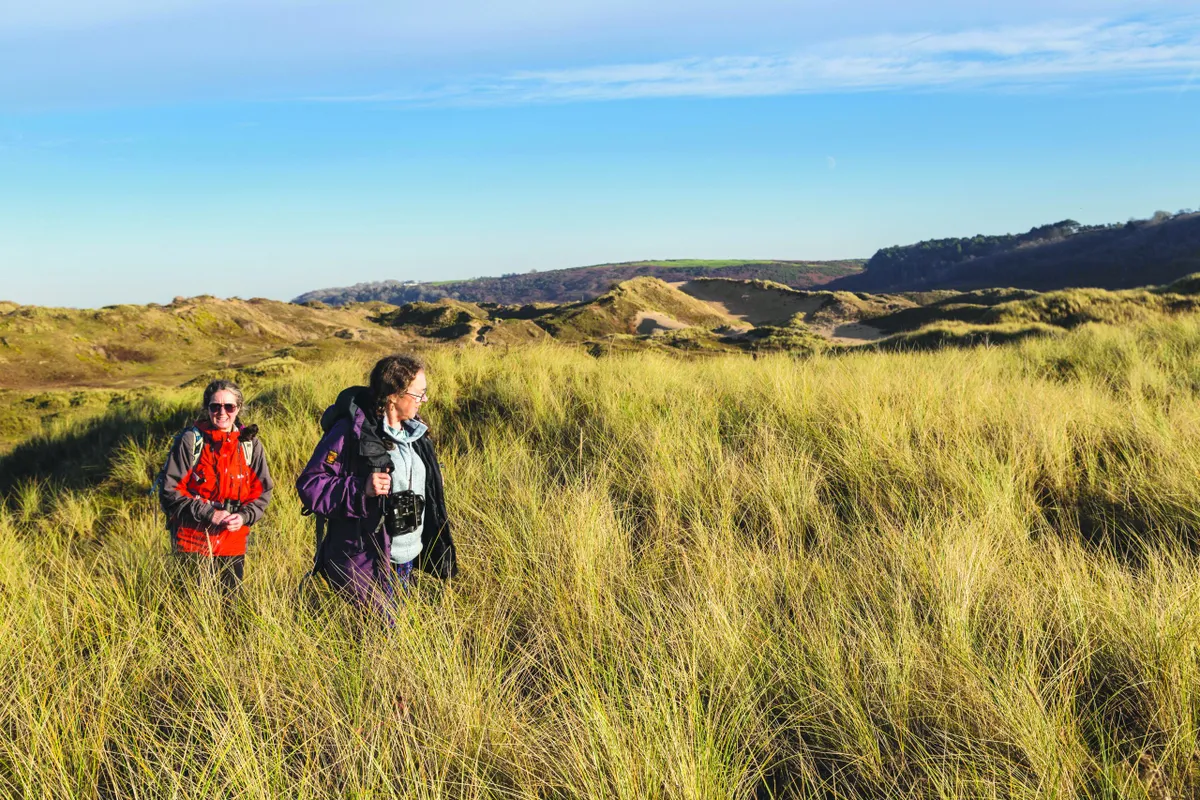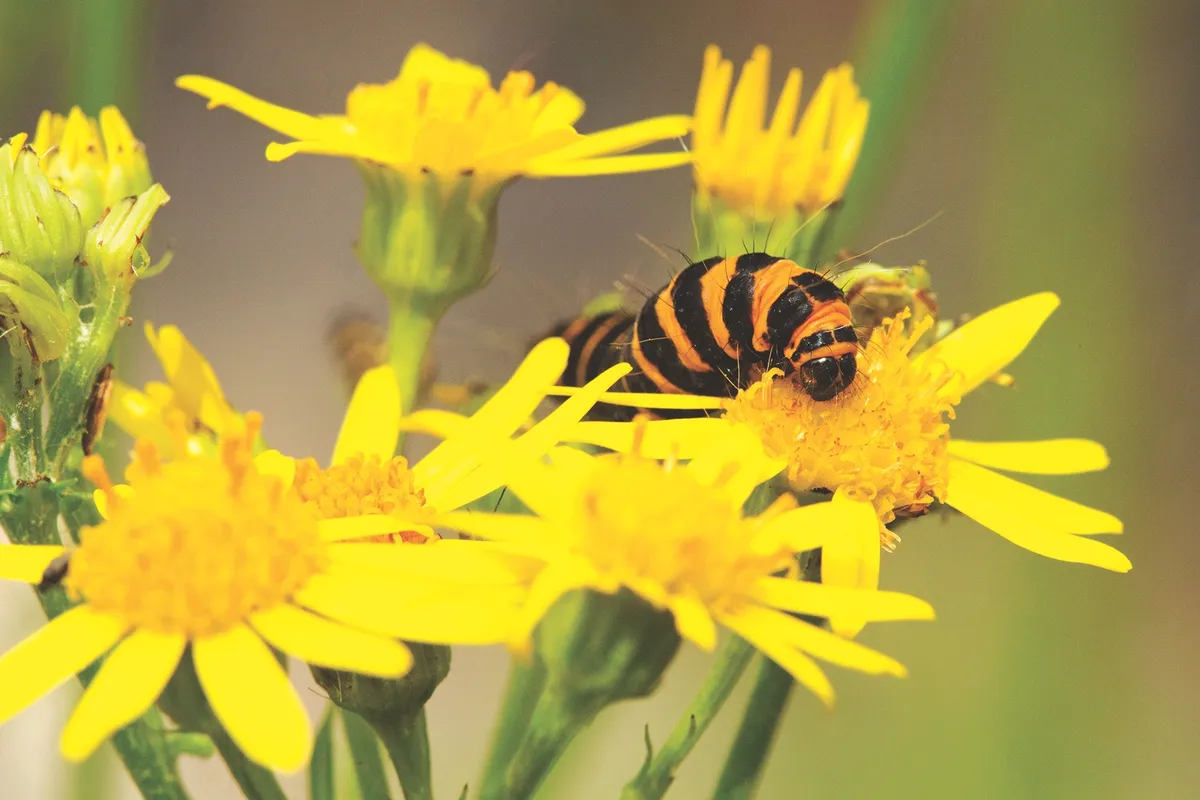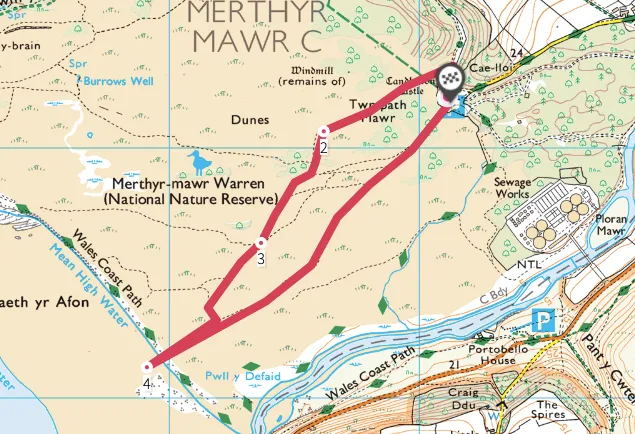You don’t need a stomach for roller-coasters to take on Merthyr Mawr’s ‘big dipper’ – the second highest sand dune in Europe.
A Carboniferous limestone ridge covered with sand, this huge dune’s steep sides tower over Merthyr Mawr Warren National Nature Reserve’s unique wildlife-rich landscape, where rich, soft colours of moss and marram grass blend into sultry butterscotch sands.

This 339-hectare sand dune system is a wonderful example of the successional stages of dune formation, from stabilised mature dunes, then slacks, to embryonic dunes and bare sand flanking the wide expanse of beach.
Once part of a dune system that stretched to the Gower Peninsula, Merthyr Mawr has witnessed thousands of years of human endeavour. Stone Age flints, Roman tiles and Bronze Age and Neolithic barrows have all been uncovered beneath these shifting sands. The dramatic dunes also doubled for Arabian desert in David Lean’s epic 1962 film Lawrence of Arabia.
Related content
Only 2.5 miles from the town of Bridgend, this Site of Special Scientific Interest boasts diverse wildflower-rich habitats, including saltmarsh, dune woodlands with pine and alder, ponds and scrub. Look out for striking cinnabar moths from May, then six-spot burnet moths, and butterflies including grizzled skippers and dark green fritillaries. Diverse plant life – from rock sea lavender and burnet rose to biting stonecrop – supports some rare invertebrates, too, including dune tiger beetles, cuckoo bees and a rare weevil.
To protect the fragile dune ecology, stick to the paths and wear ankle-supporting walking boots as the way is sandy, narrow and steep in parts.

1. Cottage and castle
Drive through the tiny estate village of Merthyr Mawr, with its pretty thatched stone cottages, passing 19th-century St Teilo’s Church. At the end of the road, stop in privately managed Candleston car park (bring coins for the ticket machine; £2 for two hours or £3 all day).
On the hill to the right of the car park entrance you’ll see the evocative ivy-covered ruins of Candleston Castle, a fortified 14th-century manor house. Below the castle, follow the blue waymarker that leads to the circular dune walk. Through the trees on your left, glimpse a great wall of caramel-coloured sand heading skywards. Cross the bridge over a stream into a clearing, where the steep bare sand of the big dipper towers above. Clamber up the right side of the dune and straight over the top to join the path leading to the lookout, for stunning 360° views. Ignore the blue waymarker to your left and follow the path straight ahead towards a large flat clearing, the perfect spot for a picnic with a coastal vista.
2. No slacking
Continue on the narrow sandy path that leads steeply down the other side of the big dipper; watch your step, as roots and uneven sand can send you for a tumble. At a ruined stone wall, go over the stile and straight ahead, ignoring the yellow waymarkers, to join the wider path ahead. Turn right towards the coast and take the left-hand fork, leading up and over a small dune. You should see ponds in the slacks ahead, glistening blue in a mossy green clearing. Look out for wild pansies and thyme, as well as June-flowering wild orchid species marsh helleborine. Skirt left of the ponds and over a mini dune to another small pond nestled in a vale. You’ll spot a wooden waymarker straight ahead; skirt the pond to meet it, watching out for hidden rabbit holes in the mossy banks.

3. To the Surf
Go through the gate ahead then follow the wide red waymarked bridleway towards the coast until it intersects with the yellow waymarked path for walkers. As the sand dunes become bare and wide, follow the yellow markers straight ahead to the wide sandy beach, where it connects with the Wales Coast Path. Kick off your shoes for a refreshing paddle.
4. Rolling sands
Rejoin the path to follow the yellow waymarkers back to the car park, noticing the stages of sand dune formation as you go.
Once eateries reopen, head towards Ogmore-by-Sea to refuel at the delightfully named Pelican in Her Piety gastro pub, or sample local products at popular Cobbles Kitchen & Deli on Ogmore Road.
Merthyr Mawr National Nature Reserve walking route and map

Words: Margaret Bartlett